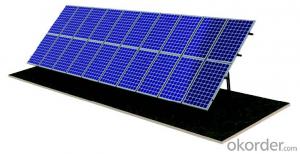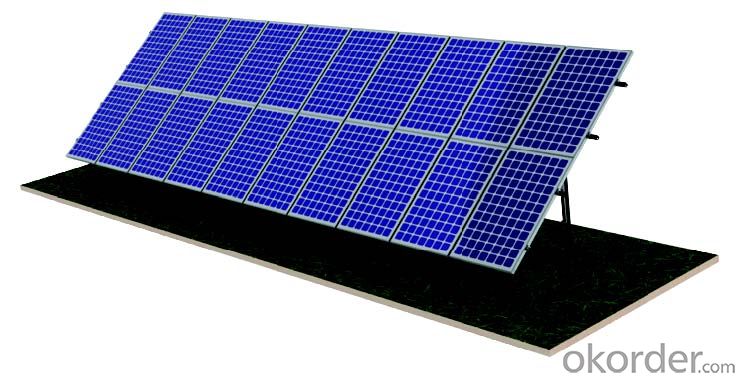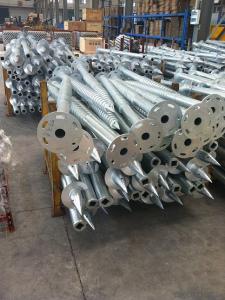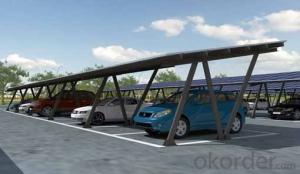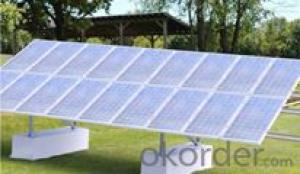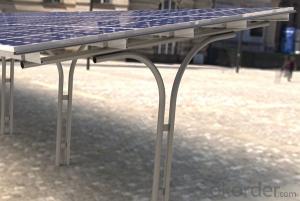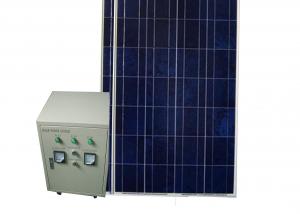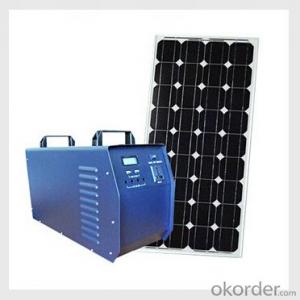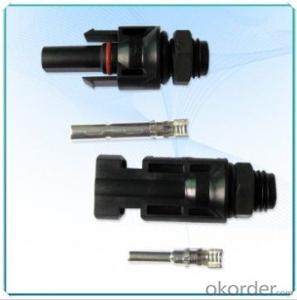Solar Energy Systems Arizona - Ground System
- Loading Port:
- China Main Port
- Payment Terms:
- TT OR LC
- Min Order Qty:
- -
- Supply Capability:
- -
OKorder Service Pledge
OKorder Financial Service
You Might Also Like
Packaging & Delivery
Packaging Detail:Normal package seaworthy
Delivery Detail:15 days
Specifications
Easy installation Competitive price TUV&SGS test report & CSA certification 15-warranty
Specifications
1) Super smooth beautiful appearance,outstanding quality,large supply.
2) Available in customized surface finishes.
3) Well machined,for example,cutting,drilling and milling with excellent tolerance.
4) Meet with customer’s designs and supply you best price.
5)Usages:Supply for solar panel modules.
Technical characteristics
Installation site:
ground,hillside,and grassland
Installation angle
it is based on customers’ requirements
Installation height
it is basedon customers’ requirements
Solar panel type; with or without frame
Components arrangement :horizontal or vertical
Support track
aluminum alloy extrusion
Quality warranty
15 years
Advantages
1)Quick installation: with high degree of pre-installed rate, the system could be easily installed by using galvanized carbon steel rails for PV Stent, and specially designed connection parts of the PV bracket, which could reduce installation time and cost greatly.
2)Offer unmatched durability: with all structural components comprised of high class stainless steel and anodized aluminum alloy, it is designed for 25 years service life and backed by 15 years warranty.
3)Stand up to extreme weather: The SuninTek solar mount is designed to stand up to the extreme weather complied with the AS/NZ 1170 and other international structure load standard by the skilled engineer. The main support components also have been tested to guarantee its structure and load-carrying capacity.
4)Provide broad installation flexibility: These systems accommodate most commercially available framed solar panels , and they can scale easily from small to large, multi-megawatt installations.
5)Diversified Application: The PV mounting system produced can be adopted by various types of PV cells panels which you can find in the market. It can serve for both mini solar power system and huge plant with megawatt capability.
Main features
1. Installation cost savings.
2. Save installation time.
3. Increase the mechanical strength of solar energy mounting to ensure that wind requirements.
4. The outdoor for installation of solar energy.
5. Length can be customized according to customers.
6. Service life of up to 25 years.
7. Products through the international certification.
8. Stent material composition of the galvanized steel and aluminum.
9. 15 years system and structural guarantee.
10.Flexible post spacing withstands different wind & snow loads.
11. High quality material in Aluminium 6005-T5 and SUS 304.
12.Screws and nuts go with every components needed.
13.Mechanical calculation and reliability tested to ensure highest product quality.
- Q: How does the efficiency of solar panels vary based on the angle and orientation?
- The efficiency of solar panels can vary based on their angle and orientation. The angle at which solar panels are tilted can significantly impact their performance. Ideally, solar panels should be positioned at an angle that maximizes their exposure to sunlight throughout the day. The efficiency of solar panels is highest when they are oriented perpendicularly to the sun's rays. This means that solar panels should be facing the sun directly, with no shading or obstructions. When solar panels are angled correctly, they can capture the maximum amount of sunlight, leading to higher energy production. The orientation of solar panels also plays a crucial role in their efficiency. In the Northern Hemisphere, solar panels should generally be facing south to receive the most sunlight. By facing south, panels can receive sunlight for the longest duration during the day. However, in the Southern Hemisphere, solar panels should face north for optimal efficiency. If solar panels are not properly angled or oriented, their efficiency can decrease. For example, if panels are tilted too steeply or too shallow, they may not receive the maximum amount of sunlight. Similarly, if solar panels are not facing the right direction, they may not capture sunlight as efficiently. It is important to note that solar panels can still generate electricity even if not perfectly angled or oriented. However, their efficiency will be lower, resulting in a lower energy output. Additionally, the efficiency of solar panels can also be affected by factors such as temperature, dust, and shading from nearby objects or trees. To maximize the efficiency of solar panels, it is recommended to consult with professionals who can evaluate the specific location and provide guidance on the optimal angle and orientation for the panels. By ensuring that solar panels are properly angled and oriented, one can maximize their energy production and ultimately reap the benefits of solar power.
- Q: Can solar energy systems be used in powering green hotels or eco-resorts?
- Yes, solar energy systems can definitely be used to power green hotels or eco-resorts. Solar panels can be installed on the roofs of buildings or in nearby areas to generate electricity from the sun's rays. This renewable energy source helps reduce the carbon footprint of these establishments by reducing reliance on fossil fuels. Additionally, solar energy systems can also provide hot water for showers and pools, further enhancing the sustainability of these eco-friendly accommodations.
- Q: Can solar energy systems be used for space cooling?
- Yes, solar energy systems can be used for space cooling. Solar-powered air conditioning systems use solar energy to generate electricity, which is then used to power the cooling process. These systems can be used to cool indoor spaces, reducing the reliance on conventional electricity sources and minimizing the environmental impact.
- Q: Can a solar energy system be installed on a gas station or convenience store?
- Yes, a solar energy system can be installed on a gas station or convenience store. Many gas stations and convenience stores have already adopted solar power to reduce their energy costs and carbon footprint. Solar panels can be installed on rooftops or canopies, providing clean and renewable energy to power the operations of these establishments.
- Q: How does the angle of solar panels affect their efficiency?
- The angle of solar panels greatly affects their efficiency. By adjusting the angle of the panels to match the latitude of their location, they can maximize their exposure to the sun's rays. Tilting the panels towards the sun helps to capture more sunlight throughout the day, resulting in increased energy production. A proper alignment ensures that the panels receive optimal sunlight, leading to improved efficiency and higher energy generation.
- Q: What are the components of the solar photovoltaic system?
- Frame: aluminum alloy frame with high strength, strong resistance to mechanical impact. Is also the most valuable part of home solar power. A device for converting direct current into alternating current. Since the solar cells and batteries are DC power, while the load is AC load, the inverter is essential. The inverter can be divided into independent operation inverter and grid connected inverter. The independent operation of the inverter is used for the independent operation of the solar cell power generation system, for independent load power supply. Grid connected photovoltaic power generation system for grid connected operation. The inverter can be divided into square wave inverter and sine wave inverter according to the output wave type. The square wave inverter has the advantages of simple circuit, low cost, large harmonic component, and the utility model can be used for a system with a few hundred watts and a low harmonic requirement. Sine wave inverter is expensive, but can be applied to various loads.
- Q: Can solar energy systems be used for powering security cameras?
- Certainly, security cameras can indeed be powered by solar energy systems. The conversion of sunlight into electricity by solar panels enables the storage of energy in batteries or direct powering of different devices, such as security cameras. Consequently, solar energy emerges as an excellent and sustainable option for remote or off-grid areas where the installation of electrical cables might pose challenges or incur high expenses. Moreover, solar-powered security cameras possess the advantageous ability to function without interruption, provided there is an ample supply of sunlight to generate electricity. Consequently, they prove to be a dependable and environmentally friendly alternative for surveillance systems.
- Q: Can solar energy systems be used for transportation purposes?
- Yes, solar energy systems can be used for transportation purposes. Solar-powered vehicles, such as solar cars, boats, and planes, have been developed and used to demonstrate the feasibility of solar energy for transportation. Solar energy can also be used to power electric vehicles, either through direct charging or by charging the vehicle's battery using solar panels. Additionally, solar energy can be harnessed to power charging stations and infrastructure for electric vehicles, enabling sustainable and renewable transportation solutions.
- Q: What is the average lifespan of a solar energy system?
- The average lifespan of a solar energy system is typically around 25 to 30 years.
- Q: How much space is required for a solar energy system?
- The amount of space required for a solar energy system varies depending on several factors such as the size and type of the system, the location, and energy needs. Generally, rooftop solar panels require an area of about 100-400 square feet per kilowatt of installed capacity. Ground-mounted systems may require more space, typically ranging from a few hundred to several thousand square feet. It is recommended to consult with a solar installer to determine the specific space requirements for a particular solar energy system.
Send your message to us
Solar Energy Systems Arizona - Ground System
- Loading Port:
- China Main Port
- Payment Terms:
- TT OR LC
- Min Order Qty:
- -
- Supply Capability:
- -
OKorder Service Pledge
OKorder Financial Service
Similar products
Hot products
Hot Searches
Related keywords
